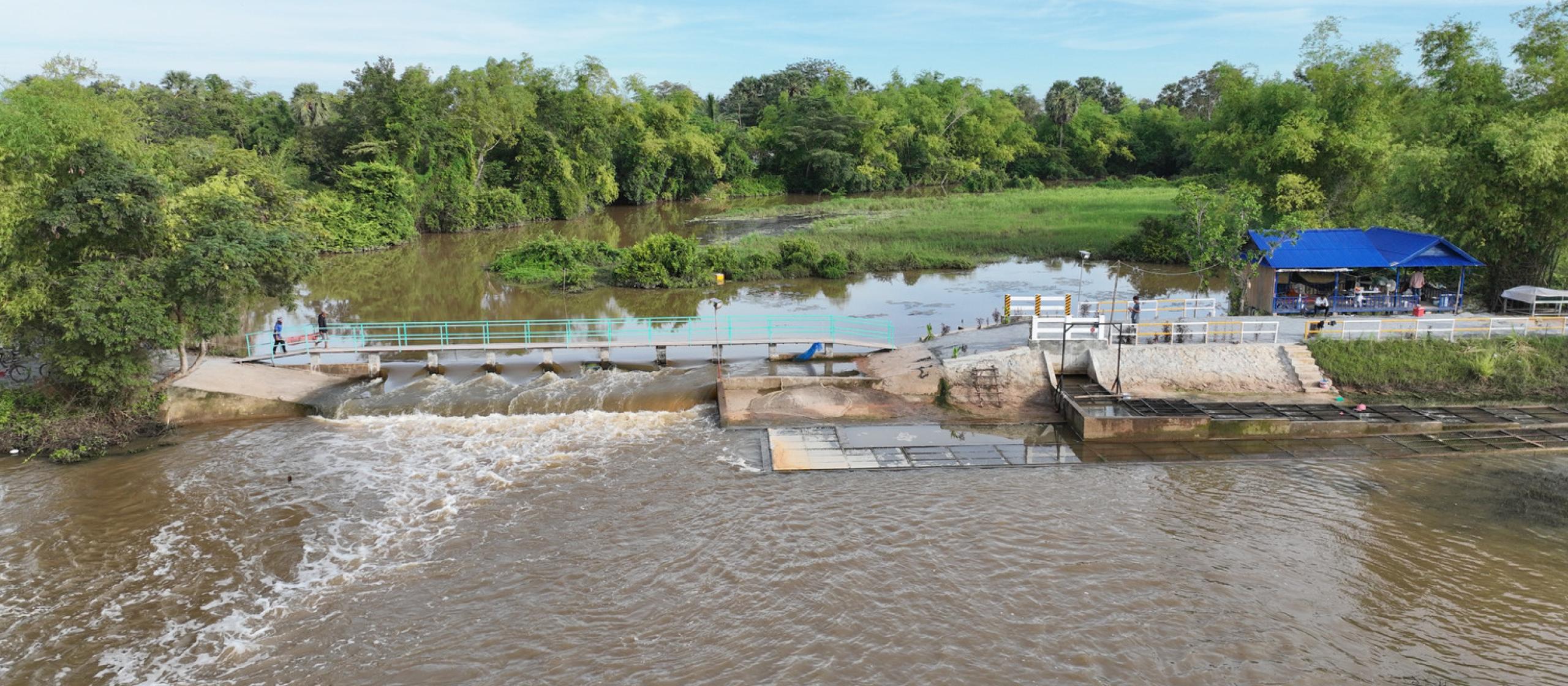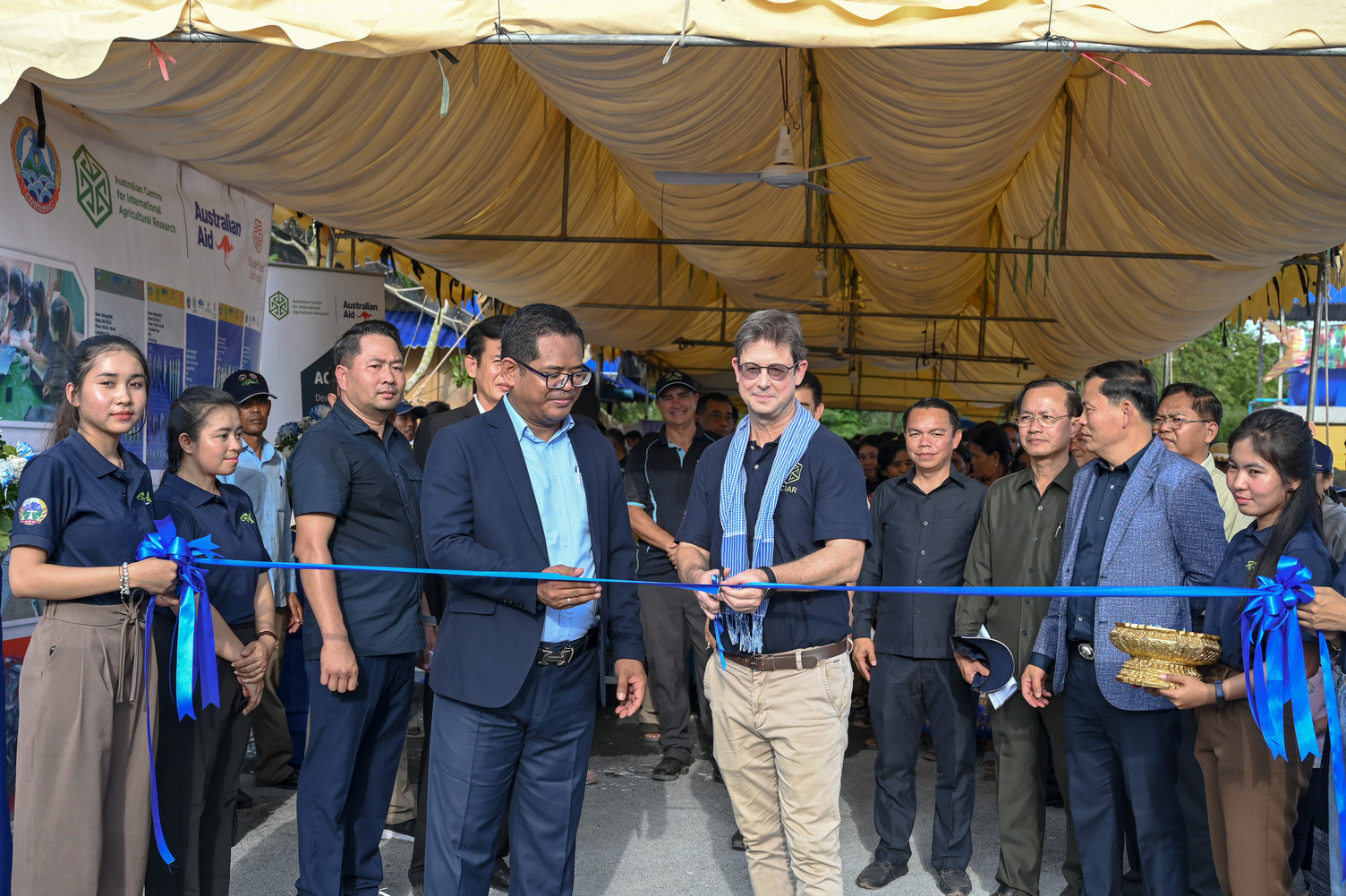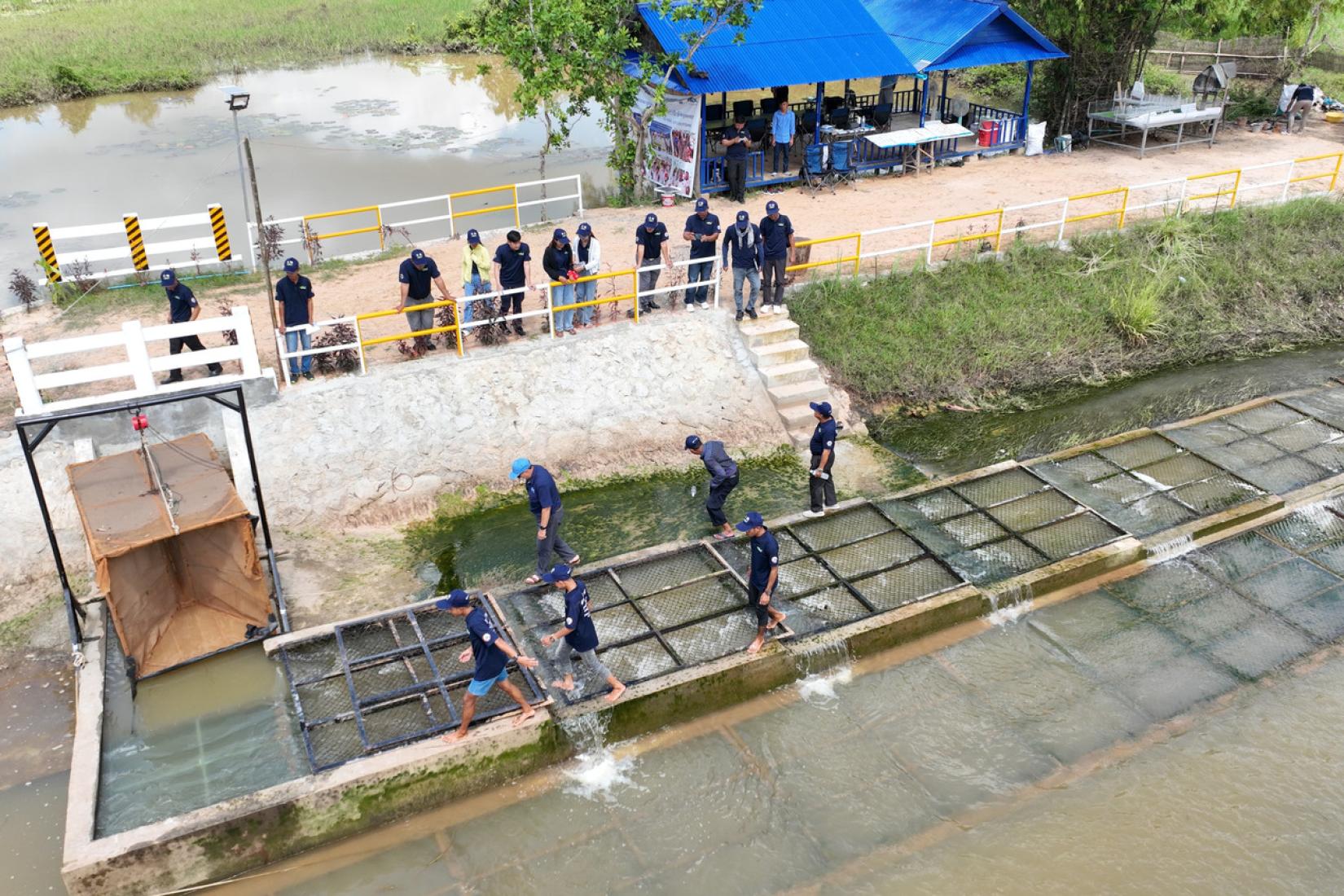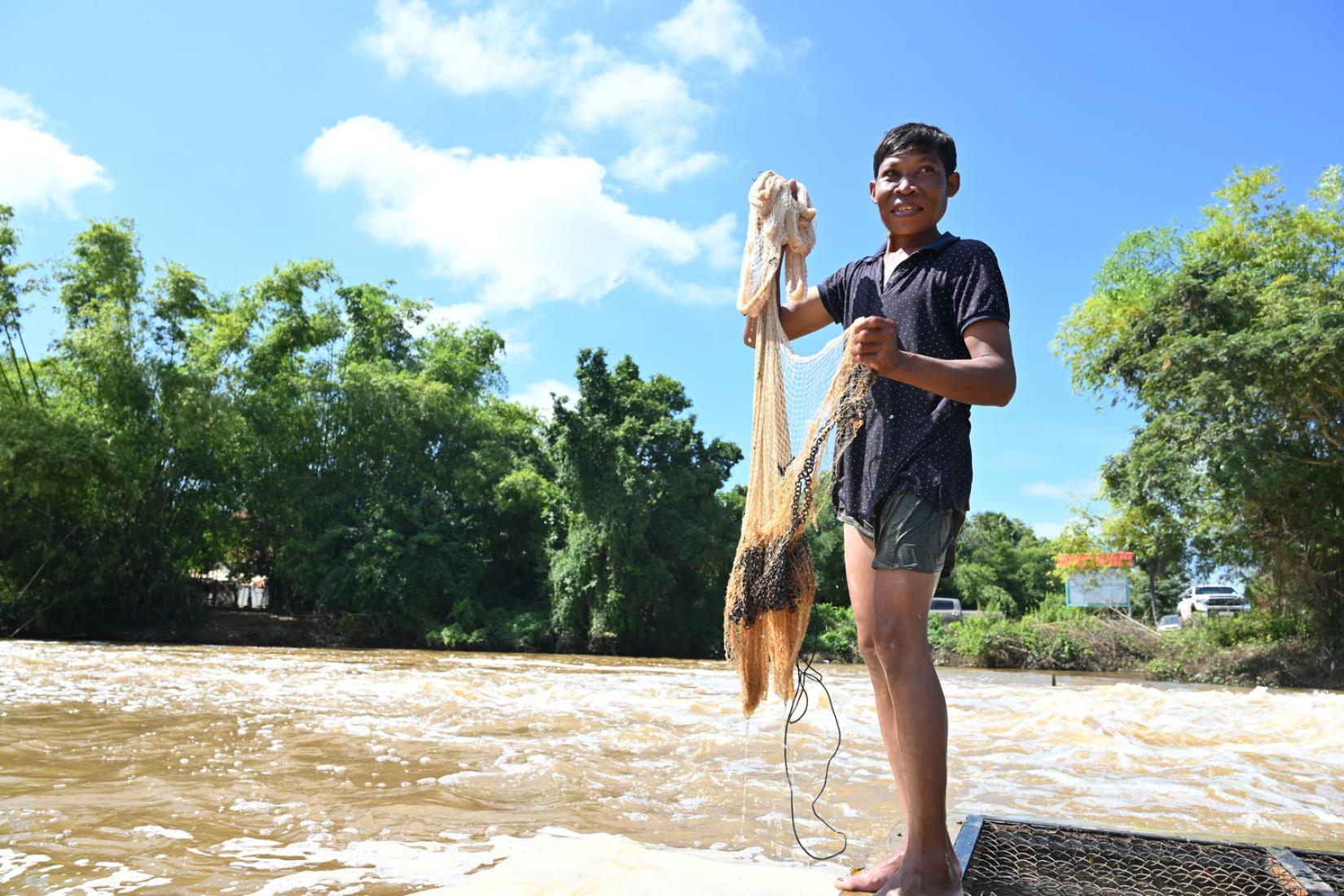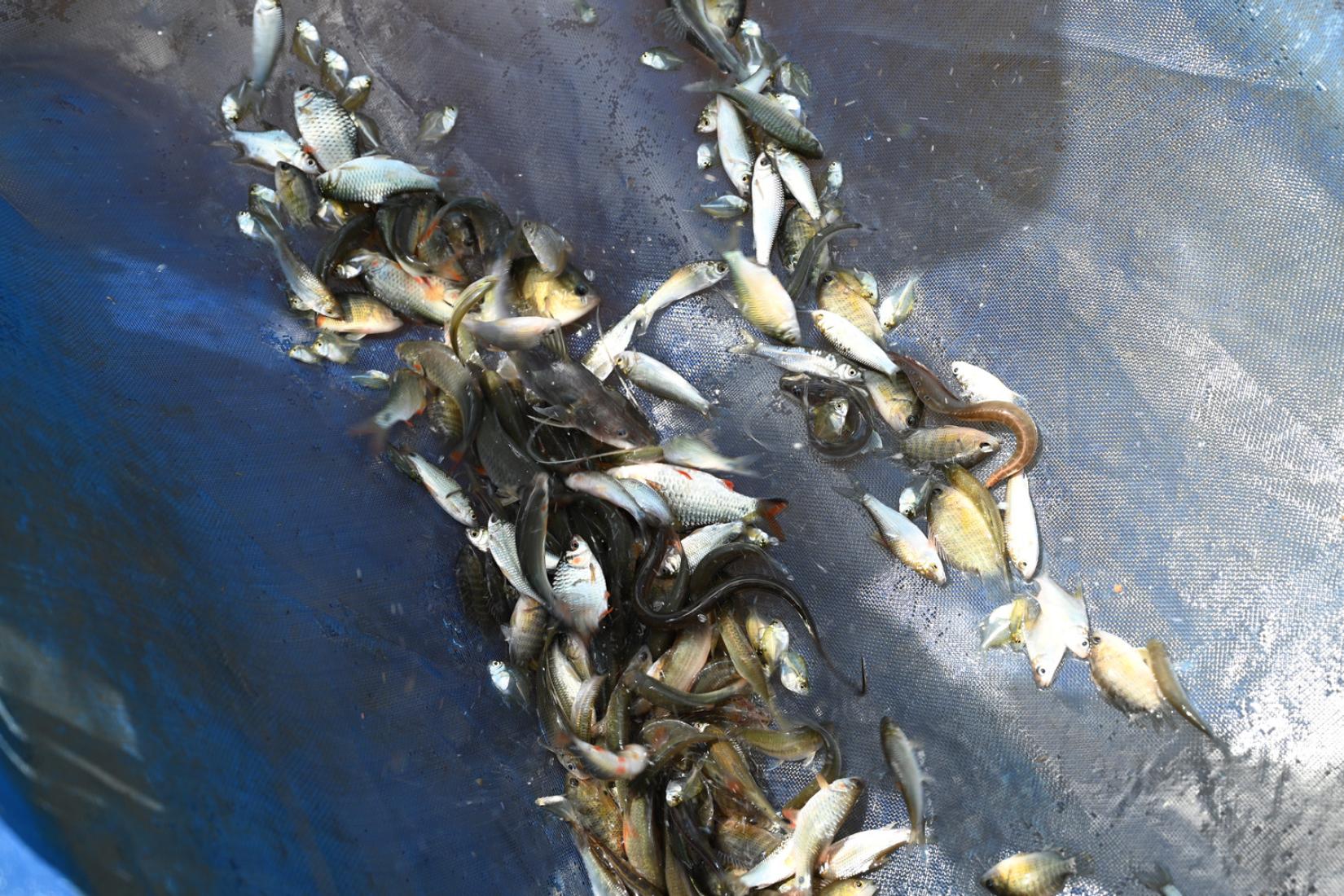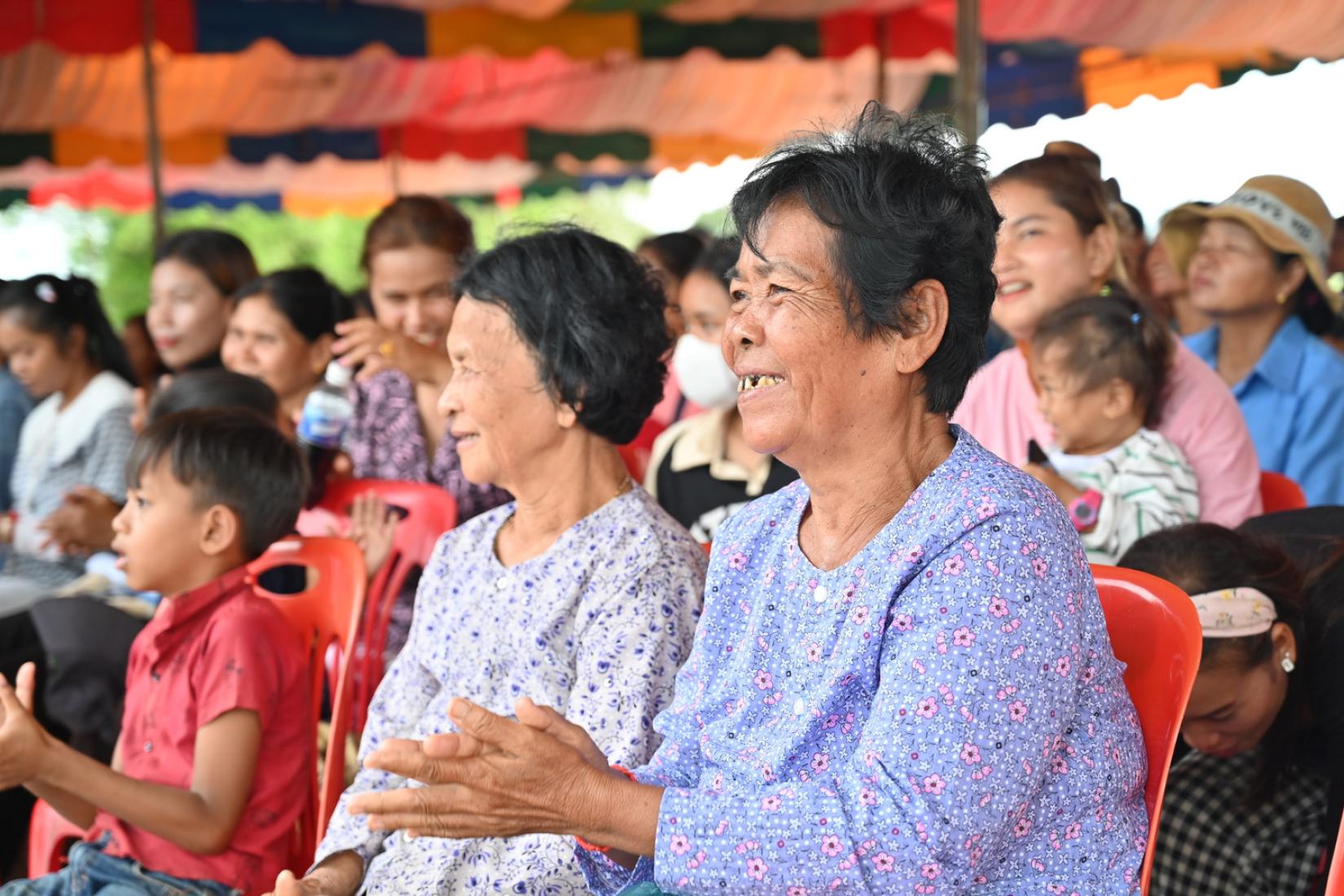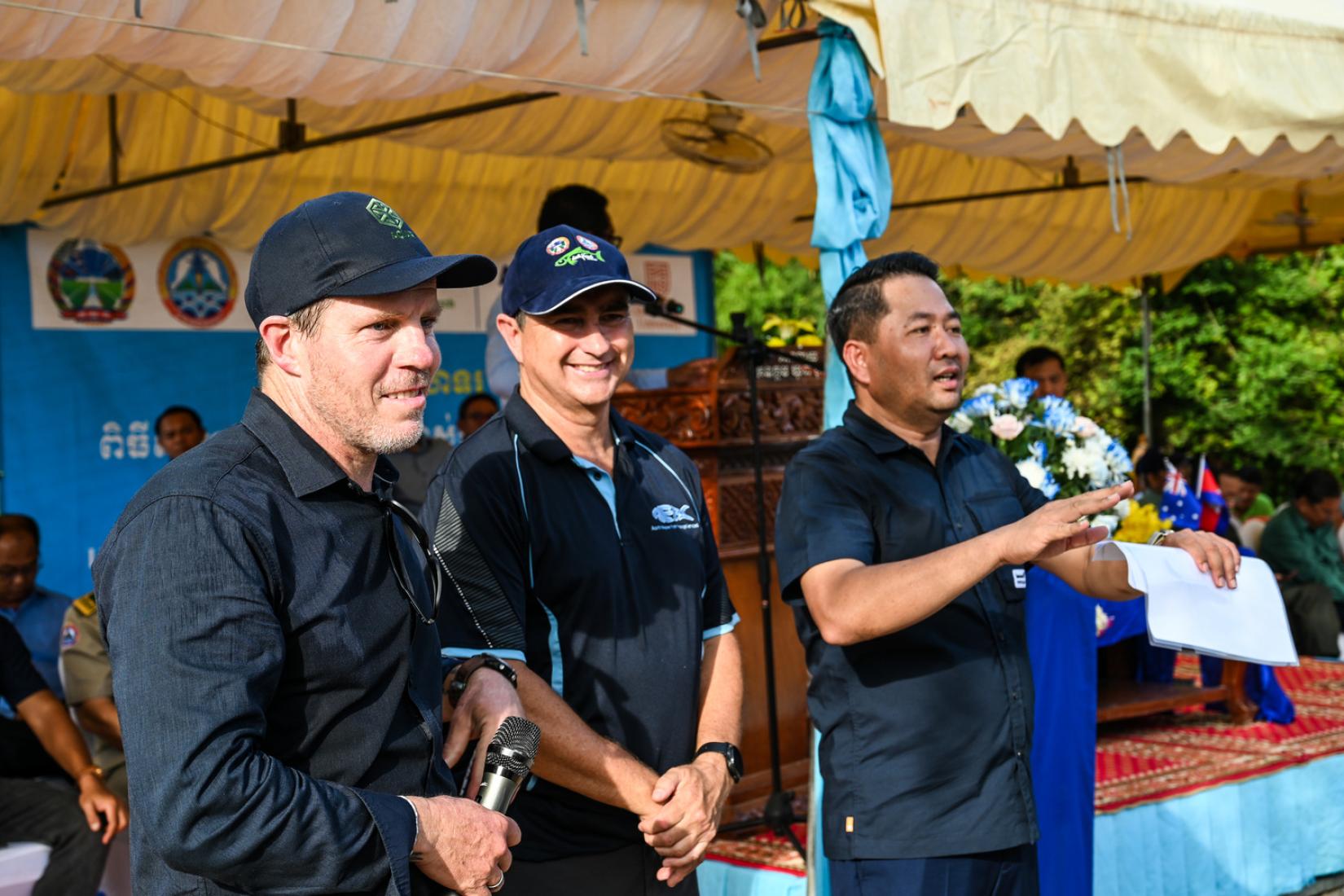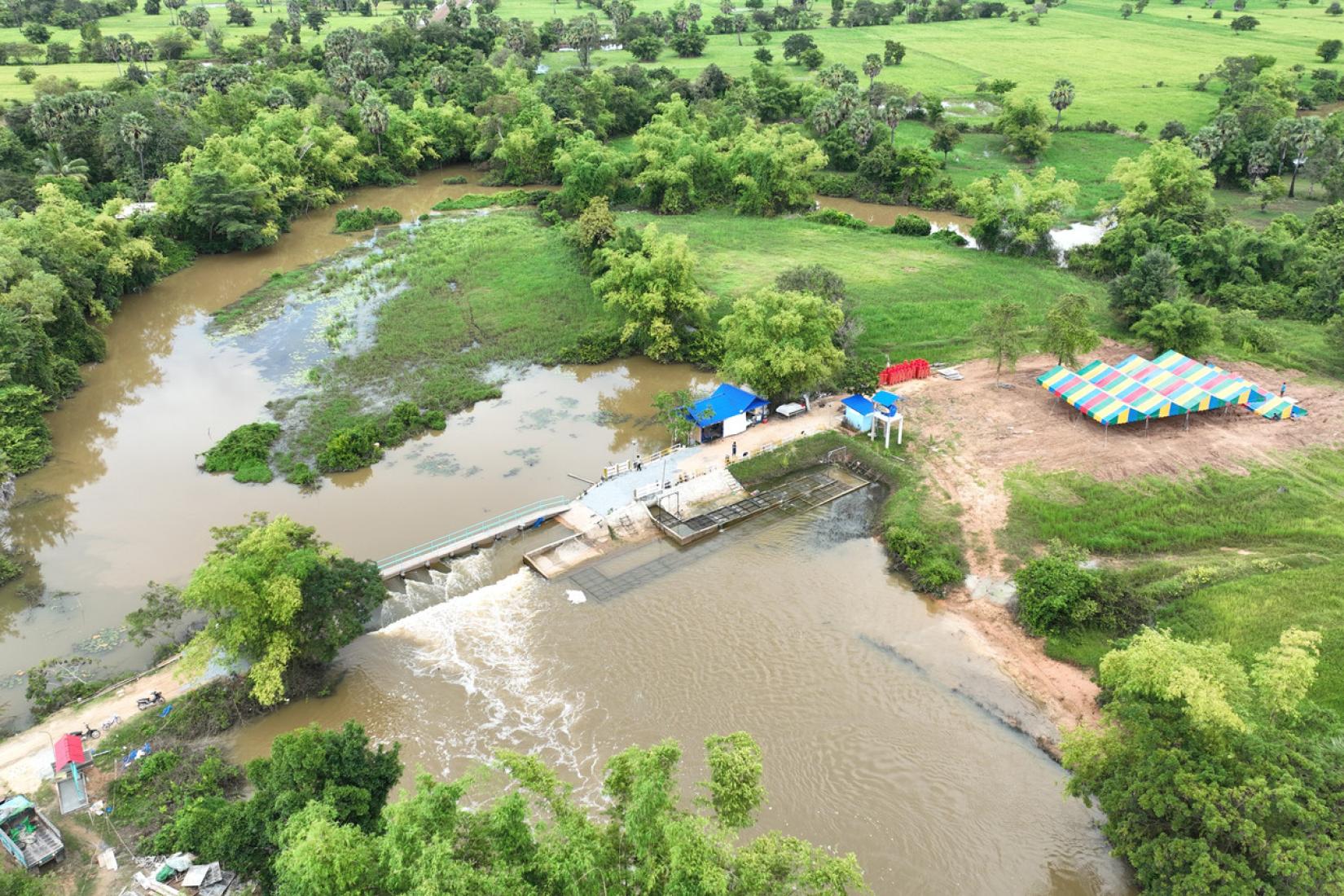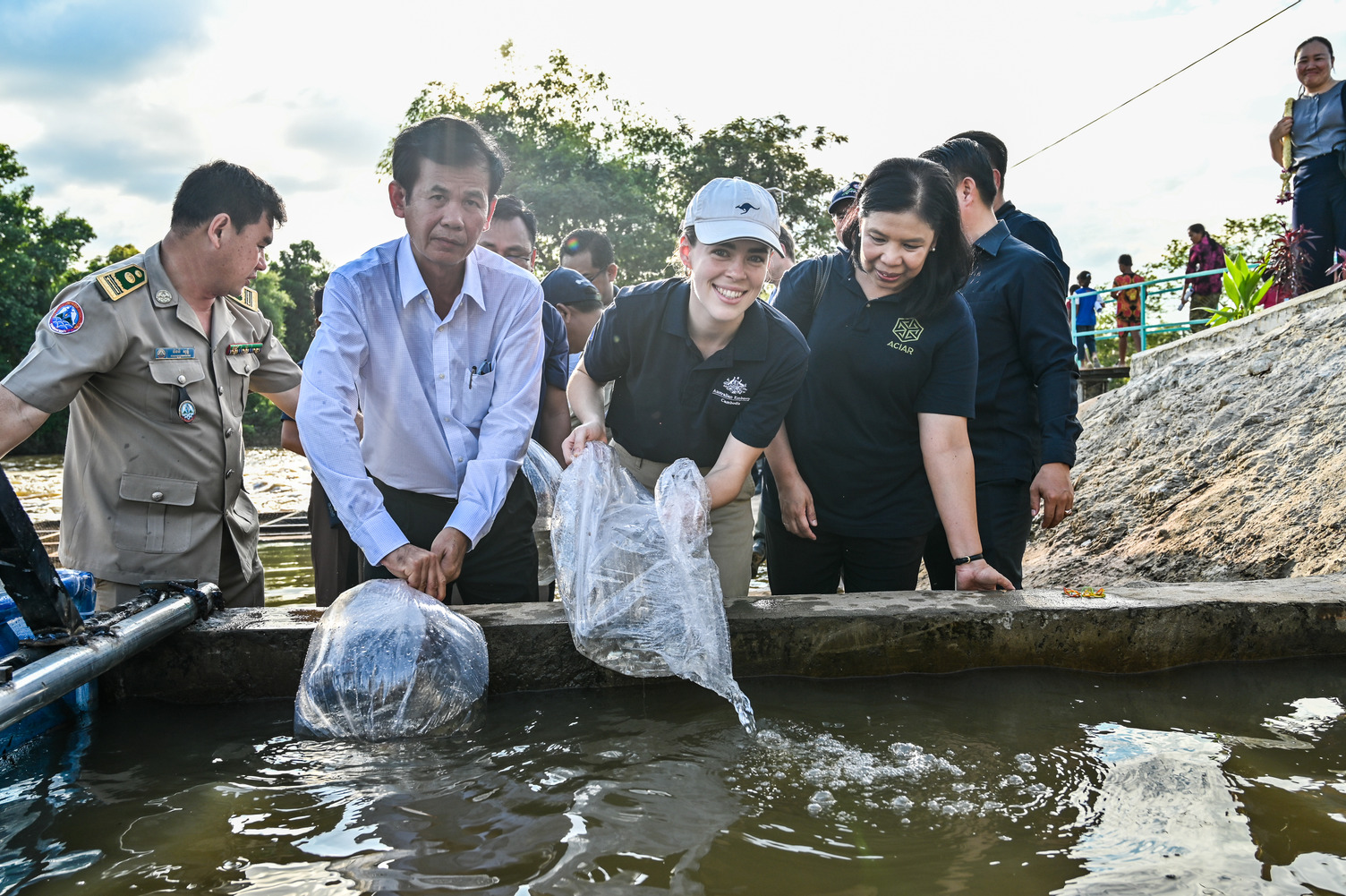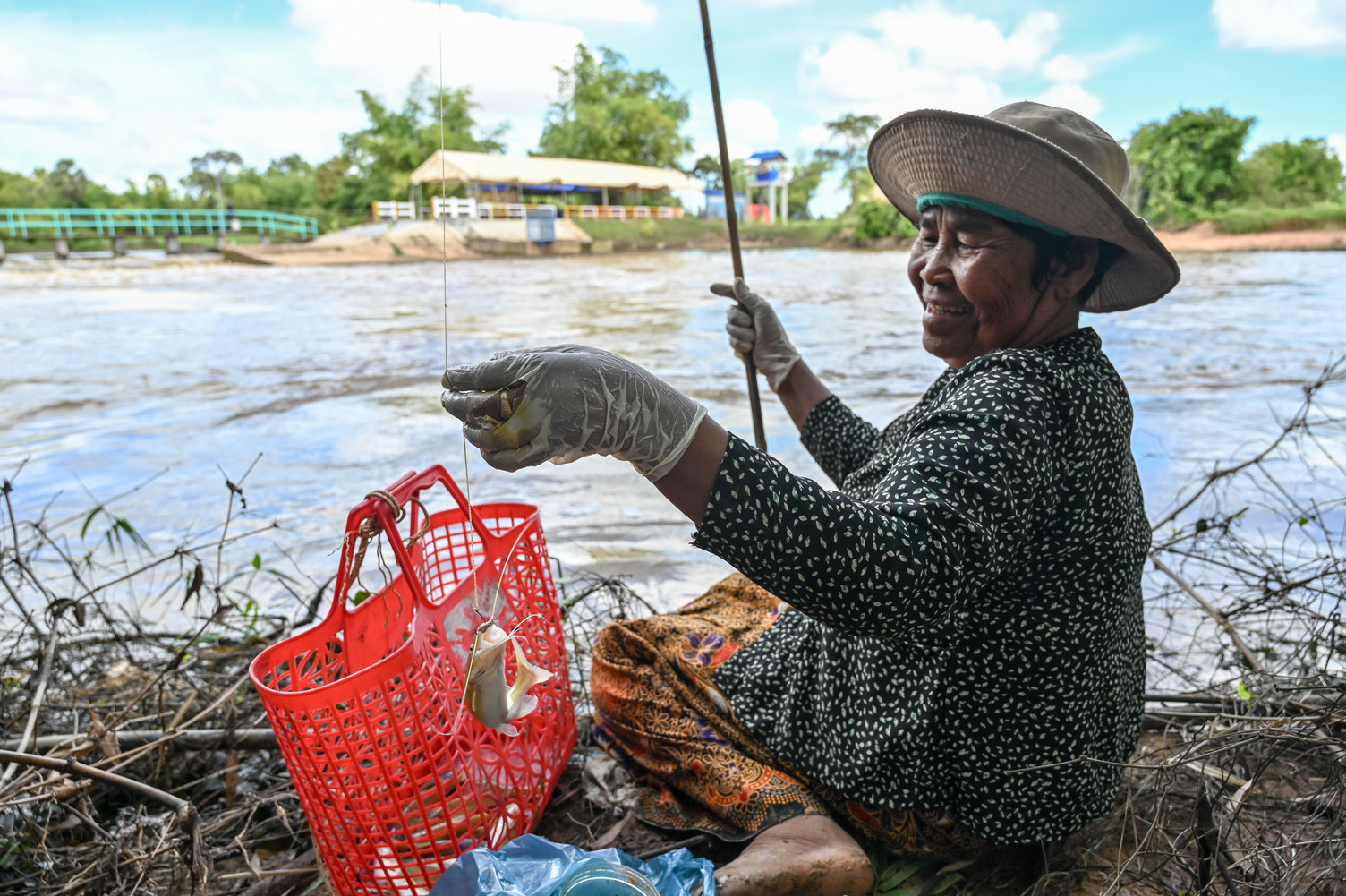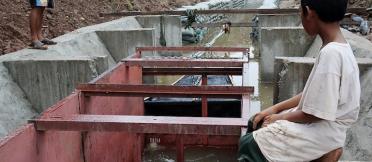Kralanh District, Siem Reap Province, Cambodia – A momentous occasion unfolded in Kralanh district, Siem Reap province, Cambodia, as hundreds of community members and government officials gathered to witness the opening of the Sleng Fishway, the first of its kind in the country.
Funded by the Australian Government through ACIAR and the Department of Foreign Affairs and Trade (DFAT), the new infrastructure was installed as part of the FishTech project and marks a significant milestone in Cambodia's effort to revitalise its fisheries and enhance rural prosperity. The Sleng Fishway is poised to play a role in boosting fish migration, ensuring access to protein-rich food sources for local communities, and promoting sustainable fisheries management practices.
The opening ceremony was attended by Australia's Ambassador to Cambodia, Mr Justin Whyatt, who commended the FishTech initiative for its positive impact on communities, livelihoods, and the environment. He emphasised that the fishway exemplifies Australia's longstanding and broad partnership with Cambodia in the agricultural sector.
‘This project holds immense significance,’ said Ambassador Whyatt. ‘It promotes the health of river systems, enabling fish to travel upstream and downstream to reach their spawning grounds and return safely. This, in turn, ensures that communities have access to more fish and protein for their nutritional needs.’
The Sleng Fishway is the combined efforts of a diverse team, including researchers and funding providers from ACIAR and DFAT, fisheries experts and water engineers from Charles Sturt University, the Fisheries Administration of Cambodia and the active participation of local communities and authorities. This shared commitment has resulted in a valuable community asset that will increase fish yields, bolster food security and promote conservation efforts.
The Sleng Fishway is expected to benefit over 20,000 individuals from 31 villages directly. Wild-caught fish from the Tonle Sap Great Lake, particularly small-bodied fish, serve as a staple food source for local communities, providing essential nutrients and protein for families, especially pregnant women and children. The fishway's design considers fish size and community needs to ensure a thriving fishery for future generations. Current data from the Ministry of Agriculture, Forestry and Fisheries in 2021 show that fish consumption in Cambodia has increased, with one person consuming an average of 52.4kg annually.
